Thai cuisine offers a world of exciting flavors and aromas. From spicy curries to refreshing salads, Thai dishes combine sweet, sour, salty, and spicy tastes. You’ll find a mix of fresh herbs, vegetables, and proteins in many Thai recipes.
These 15 Thai recipes will help you bring authentic Thai flavors to your kitchen. You can learn to make popular dishes like pad thai, green curry, and tom yum soup. With some practice, you’ll be able to create tasty Thai meals at home. Get ready to explore the delicious world of Thai cooking.
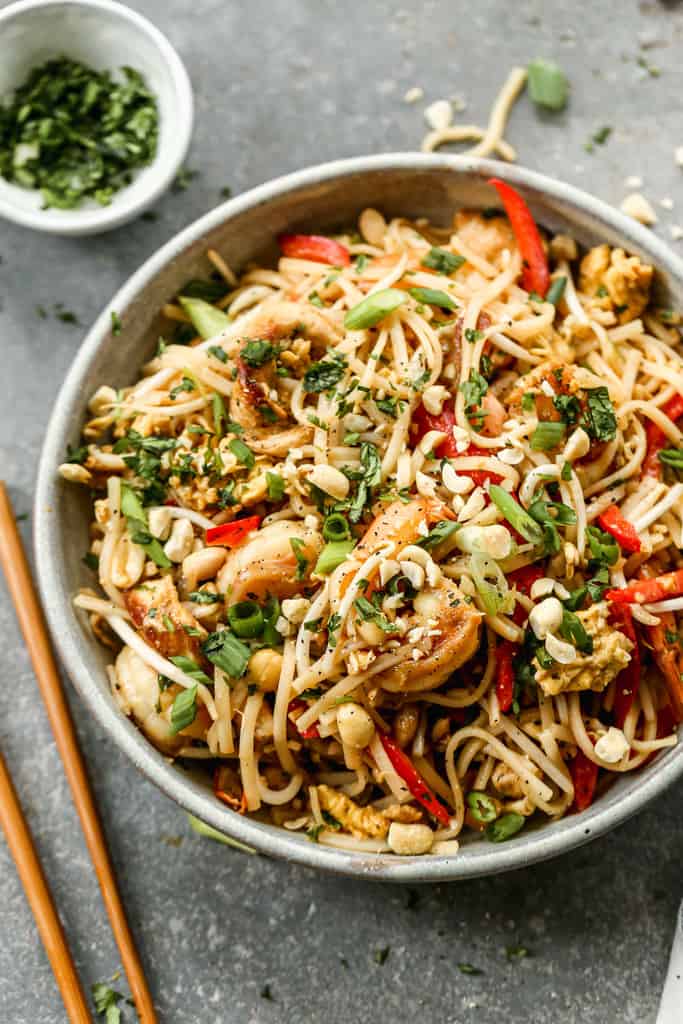
1. Pad Thai
Pad Thai is a popular stir-fried noodle dish from Thailand. You’ll love its mix of sweet, sour, and savory flavors. The main ingredients are rice noodles, eggs, tofu, and your choice of protein like chicken or shrimp.
To make Pad Thai, first soak the noodles in warm water. While they soften, prepare the sauce using tamarind, fish sauce, and sugar. Heat oil in a wok and cook your protein and eggs. Add the noodles and sauce, then toss everything together.
Finish your Pad Thai with bean sprouts, peanuts, and a squeeze of lime. The result is a tasty, balanced dish that’s sure to become a favorite in your kitchen.
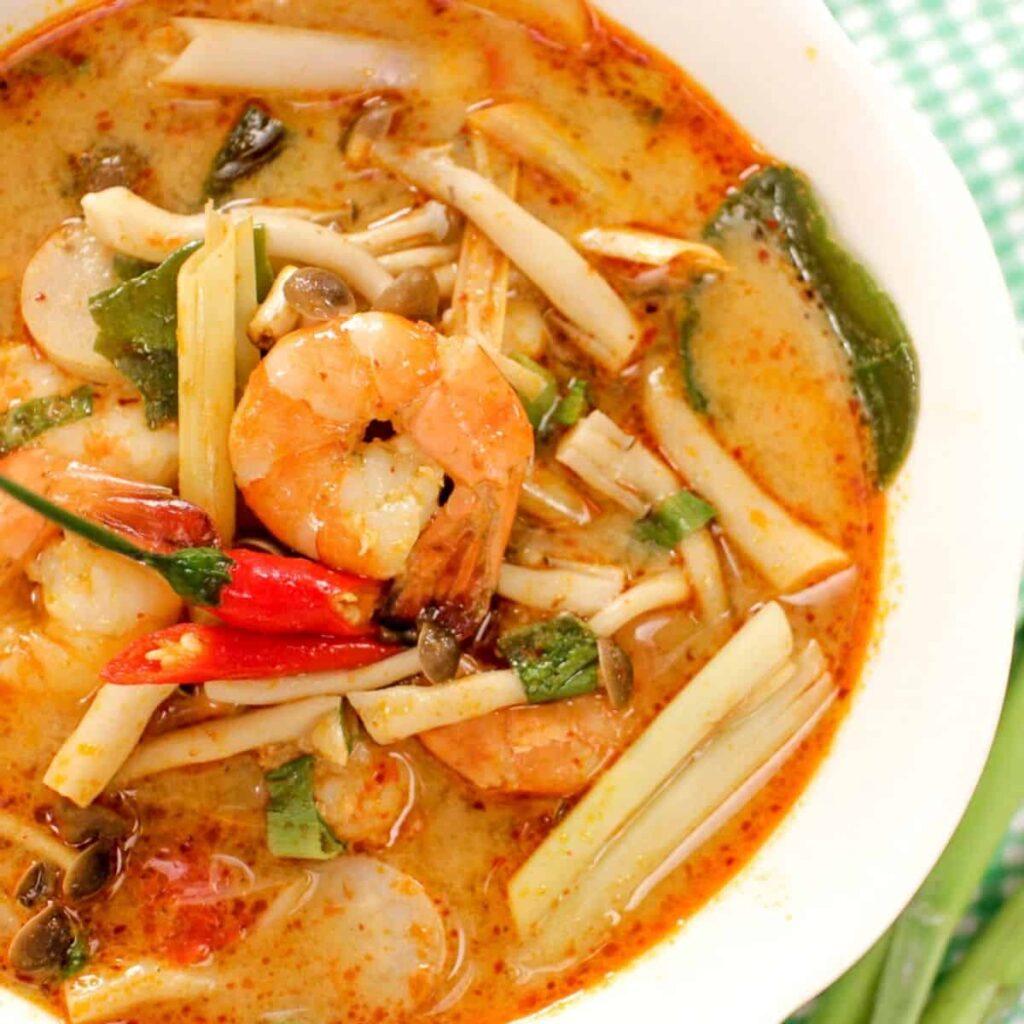
2. Tom Yum Goong
Tom Yum Goong is a popular Thai soup known for its bold, spicy-sour flavors. This hot and sour shrimp soup combines aromatic herbs and spices to create a tasty dish.
To make Tom Yum Goong, you’ll simmer lemongrass, galangal, and kaffir lime leaves in broth. Then add mushrooms and shrimp, cooking until the shrimp turn pink.
The soup gets its signature taste from fish sauce, lime juice, and Thai chili paste. Some recipes include coconut milk for a creamier version.
You can serve Tom Yum Goong as an appetizer or main course. It pairs well with steamed rice and other Thai dishes for a complete meal.
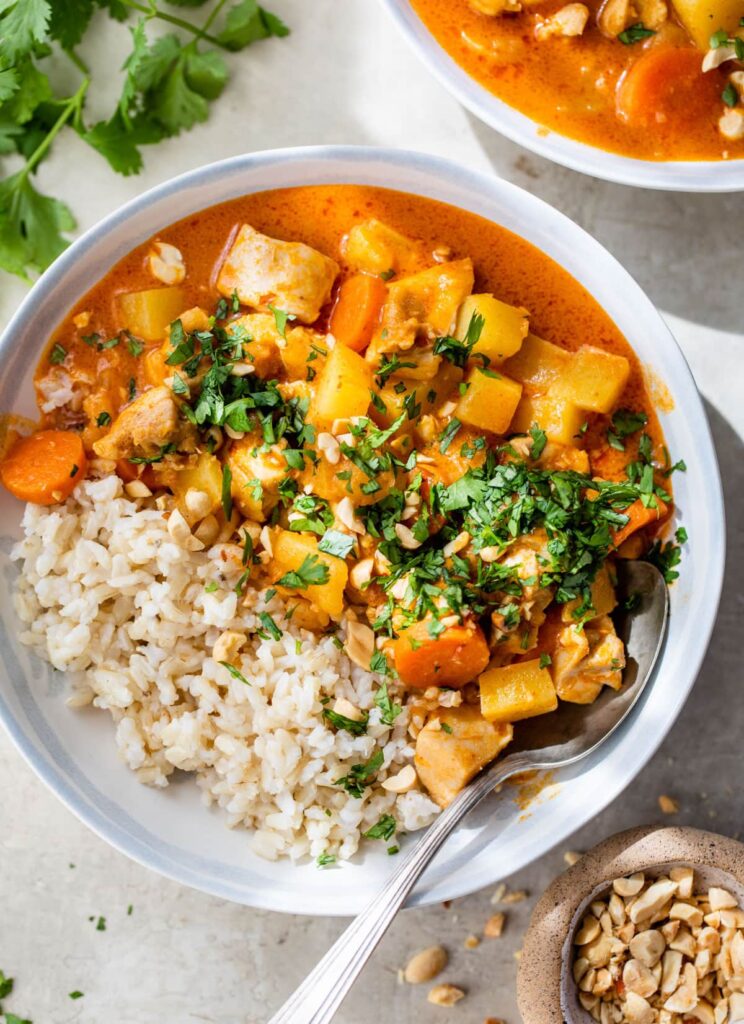
3. Massaman Curry
Massaman curry is a rich, flavorful Thai dish that combines spices and coconut milk. You’ll love its blend of sweet and savory tastes.
To make it, start by cooking curry paste in oil until fragrant. Add chicken pieces and cook for a few minutes. Pour in coconut milk and simmer gently.
Next, add potatoes, onions, and peanuts. Season with fish sauce, tamarind, and palm sugar for balance. Let it simmer until the chicken is tender and potatoes are soft.
Serve your massaman curry over steamed rice. The creamy sauce, tender meat, and soft potatoes make for a satisfying meal. Enjoy the unique mix of Thai and Indian flavors in this comforting dish.
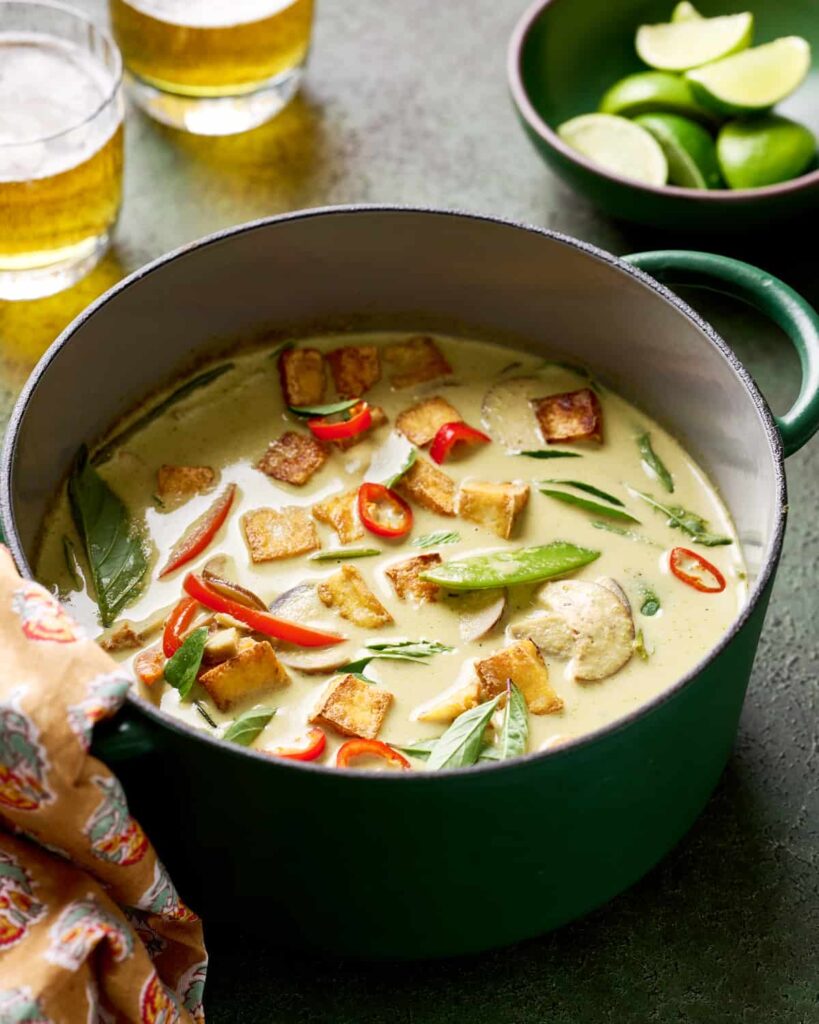
4. Green Curry
Green curry is a popular Thai dish known for its vibrant color and rich flavors. You can make it with chicken, beef, pork, or seafood. The curry gets its signature green hue from Thai green chilies.
To prepare green curry, start by cooking the curry paste in oil. Add your chosen protein and cook briefly. Then pour in coconut milk and stock to create the sauce.
You can add various vegetables like sweet potatoes, bell peppers, and bamboo shoots. Simmer until the meat is tender and veggies are cooked. Finish with Thai basil for extra flavor.
Serve your green curry hot over jasmine rice for a delicious Thai meal.
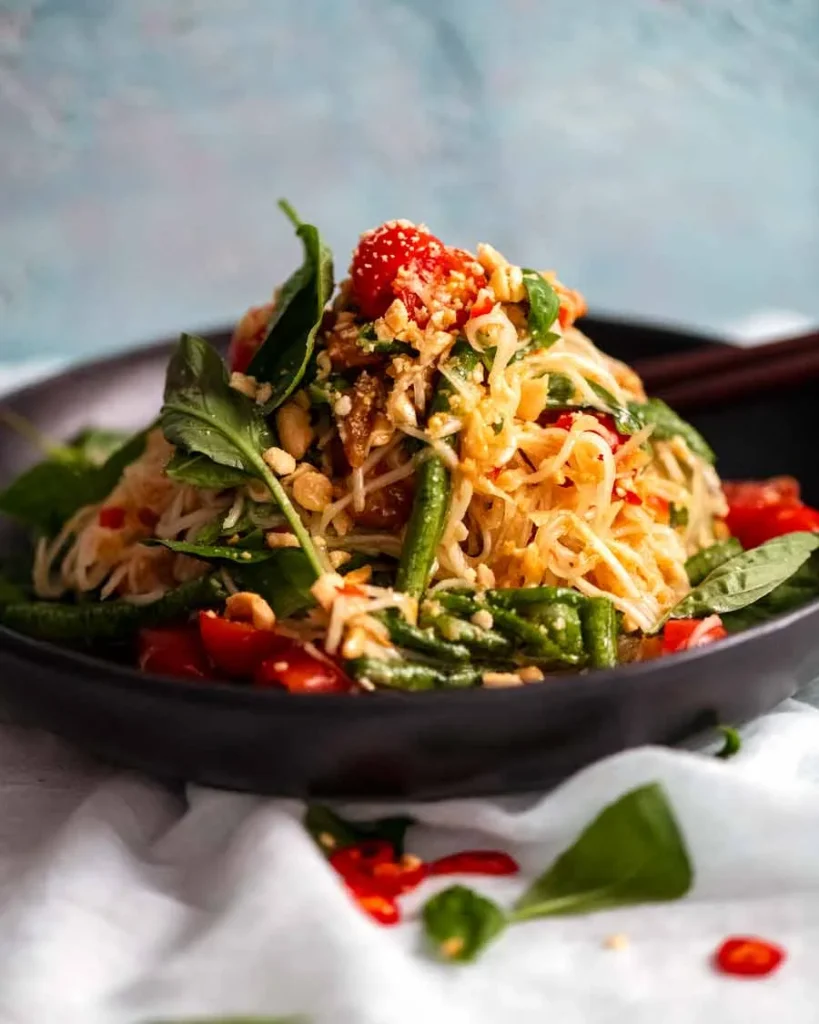
5. Som Tum (Papaya Salad)
Som Tum is a zesty Thai salad that packs a flavorful punch. You’ll love the mix of sweet, sour, salty, and spicy tastes in this dish.
The main ingredient is shredded green papaya. You can use a special tool or a sharp knife to cut it into thin strips.
To make Som Tum, you’ll pound garlic, chilies, and peanuts in a mortar. Then add fish sauce, lime juice, and palm sugar for seasoning.
Mix in the papaya, tomatoes, and green beans. Gently bruise the ingredients to blend the flavors. Top with dried shrimp for extra texture and taste.
This refreshing salad is perfect for hot days. You can adjust the spice level to your liking by changing the number of chilies used.
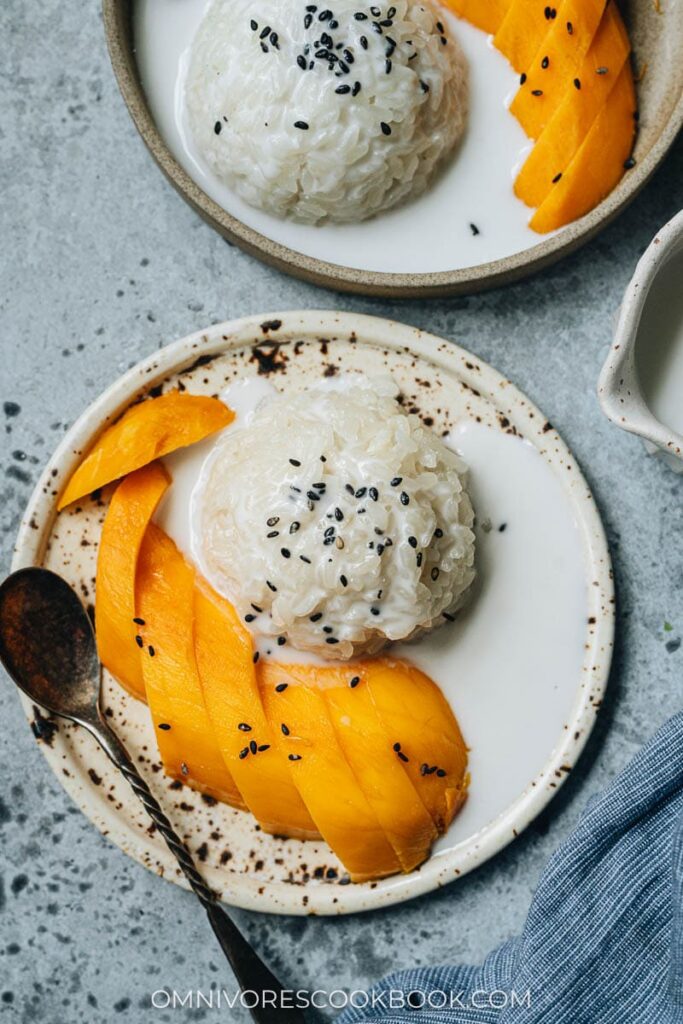
6. Mango Sticky Rice
Mango sticky rice is a beloved Thai dessert that combines sweet mangoes with creamy coconut rice. To make it, you’ll steam glutinous rice until tender.
While the rice cooks, prepare a coconut sauce by heating coconut cream with sugar and salt. Pour this mixture over the cooked rice and let it absorb the flavors.
Serve the sticky rice alongside ripe mango slices. Drizzle extra coconut sauce on top and sprinkle with toasted sesame seeds for added texture.
This dessert is best enjoyed warm or at room temperature. The contrast between the sweet mangoes and rich coconut rice makes for a truly satisfying treat.
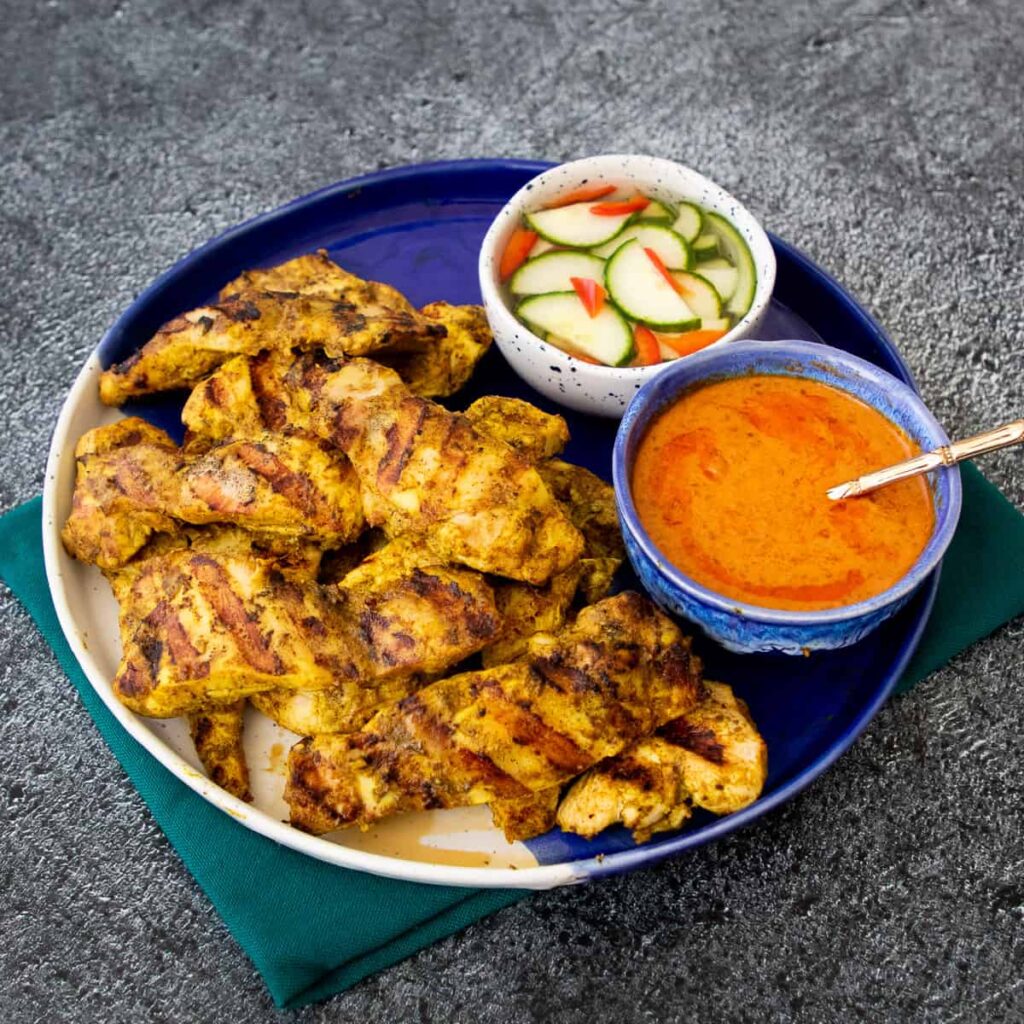
7. Chicken Satay
Chicken satay is a tasty Thai dish of grilled skewered chicken. You marinate chicken pieces in coconut milk and spices like curry powder, turmeric, and ginger.
Thread the marinated chicken onto skewers. Grill them until cooked through and slightly charred.
Serve chicken satay with peanut sauce for dipping. Make the sauce by simmering coconut milk, peanut butter, and spices. Add brown sugar and tamarind for sweetness and tang.
This dish works great as an appetizer or main course. The tender, flavorful chicken pairs perfectly with the rich peanut sauce.
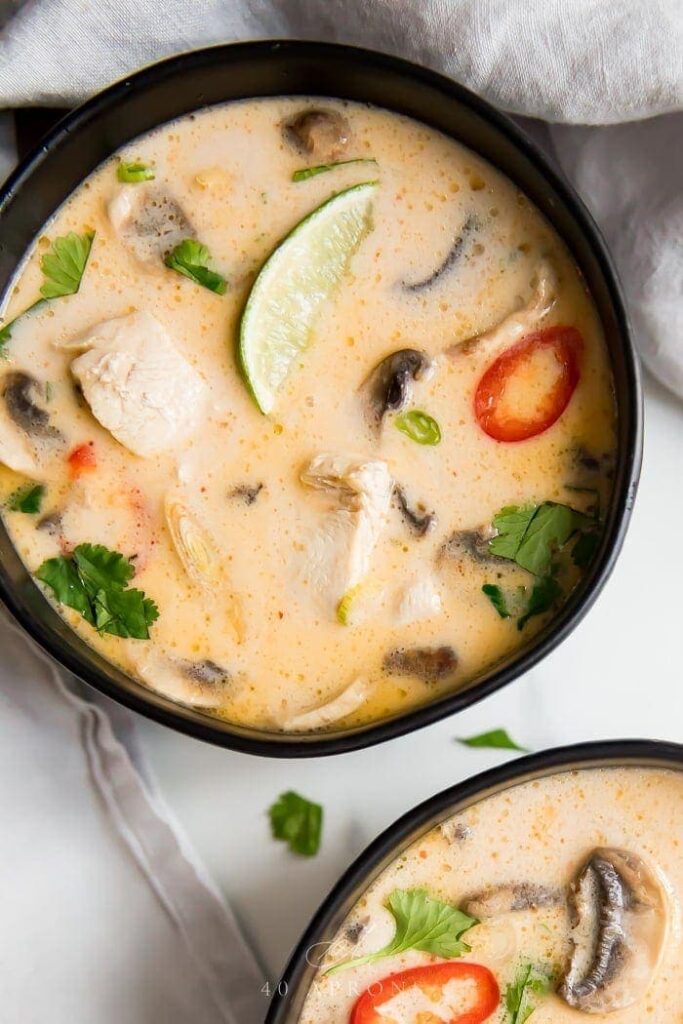
8. Tom Kha Gai (Coconut Soup)
Tom Kha Gai is a tasty Thai coconut chicken soup. You’ll love its creamy texture and rich flavors.
To make it, you simmer coconut milk with aromatic herbs like lemongrass, galangal, and kaffir lime leaves. These give the soup its signature taste.
Add chicken and mushrooms to the broth. Cook until the chicken is tender. For extra kick, toss in some chili peppers.
Season the soup with fish sauce, palm sugar, and lime juice. This creates a perfect balance of salty, sweet, and sour notes.
Serve Tom Kha Gai hot in bowls. It’s great on its own or with a side of rice.
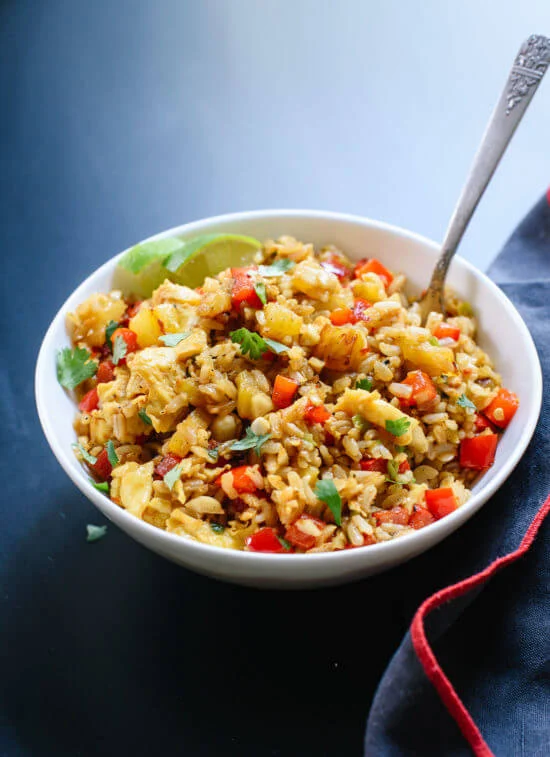
9. Pineapple Fried Rice
Pineapple fried rice is a tasty Thai dish that combines sweet and savory flavors. You’ll love the mix of juicy pineapple chunks with seasoned rice and veggies.
To make it, start by stir-frying garlic and onions in a hot wok. Add bell peppers, peas, and carrots, cooking them briefly. Toss in cooked rice and your choice of sauce or seasonings.
For extra protein, you can include shrimp or chicken. Don’t forget to add cashews for crunch. Stir everything together until the rice is well-coated and slightly caramelized.
The final touch is adding fresh pineapple pieces. Warm them through quickly to preserve their texture. Serve your pineapple fried rice hot, garnished with green onions for added flavor.
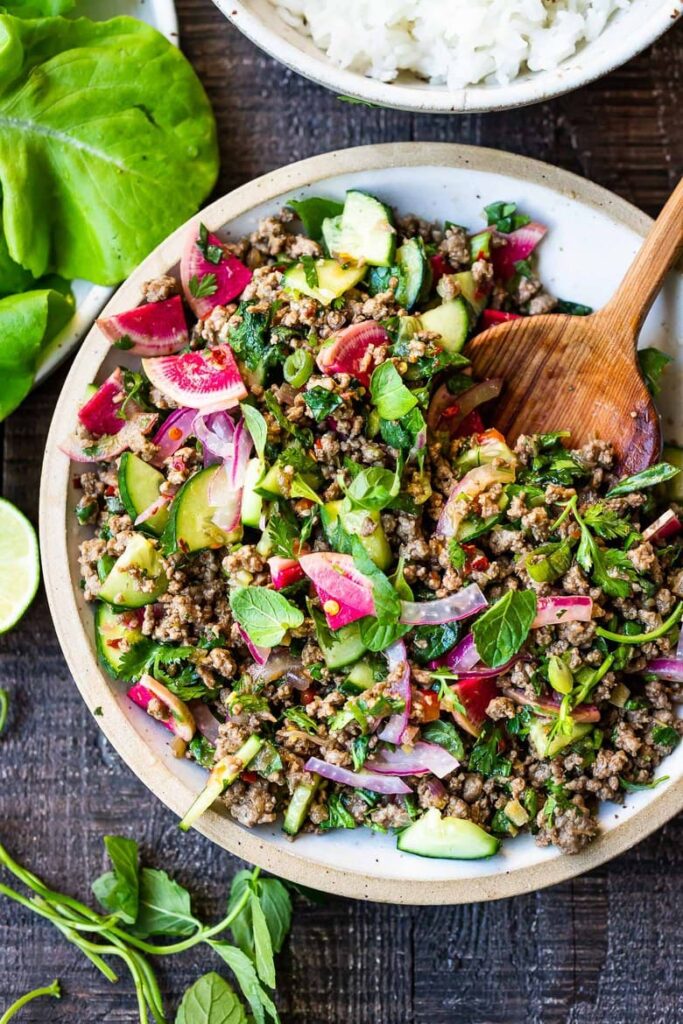
10. Larb (Spicy Salad)
Larb is a zesty Thai salad that packs a flavorful punch. You’ll find it’s a mix of minced meat, usually pork, with aromatic herbs and spices.
To make larb, cook ground pork in a pan until it’s no longer pink. Add sliced shallots, mint leaves, and cilantro to the meat.
For the dressing, mix fish sauce, lime juice, and chili flakes. Pour this over the meat mixture and stir well.
Sprinkle toasted rice powder on top for a nutty crunch. Serve your larb with sticky rice and fresh veggies for a complete meal.
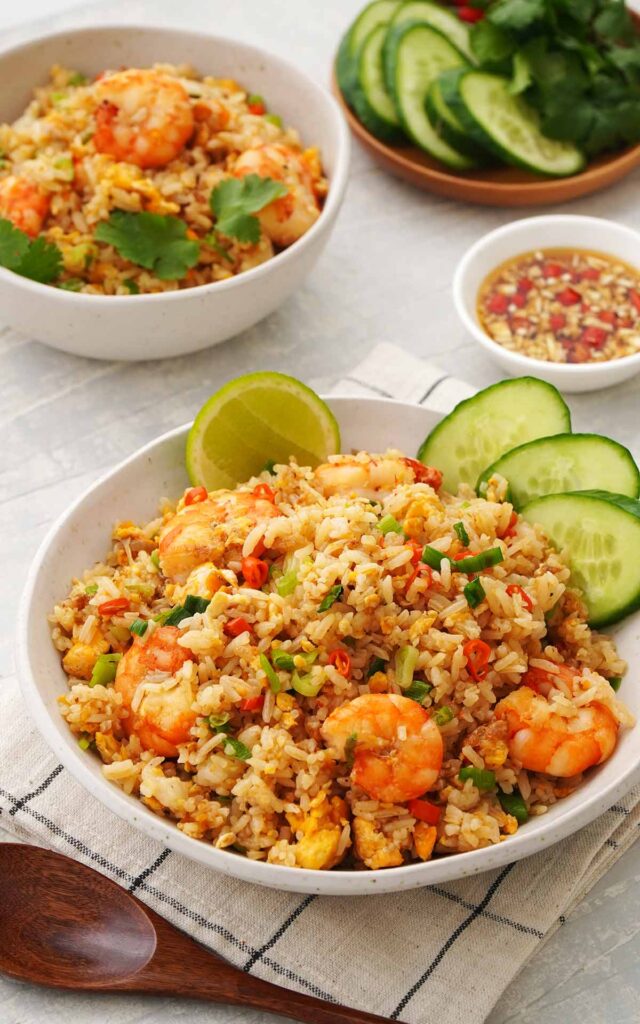
11. Khao Pad (Thai Fried Rice)
Khao Pad is a tasty and quick Thai dish you can make at home. It’s a great way to use up leftover rice.
To make it, heat oil in a wok over high heat. Add garlic and stir-fry for a few seconds. Toss in shrimp or your choice of protein and cook until done.
Push everything to one side and scramble an egg in the empty space. Mix it with the other ingredients. Add cooked rice and stir well.
Season with fish sauce and soy sauce for that authentic Thai flavor. Toss in some veggies like tomatoes or onions for extra color and crunch.
Serve your Khao Pad hot with lime wedges and cucumber slices on the side. It’s a filling meal on its own or a tasty side dish.
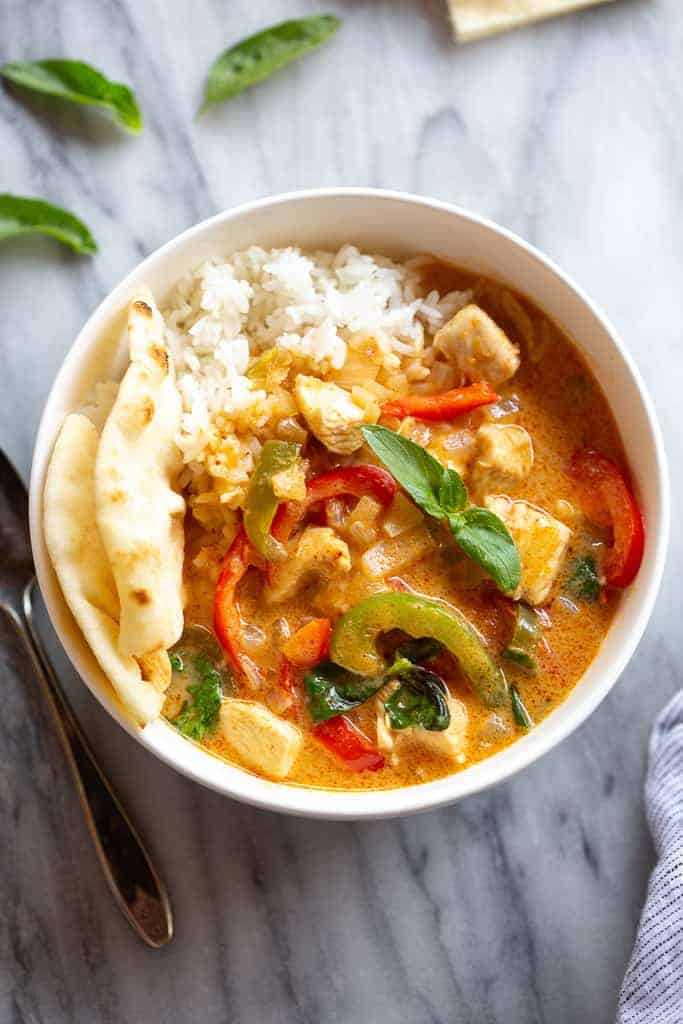
12. Panang Curry
Panang curry is a rich, creamy Thai dish with a slightly sweet and nutty flavor. You’ll love its blend of aromatic spices and coconut milk.
To make Panang curry, start by cooking curry paste in oil until fragrant. Add coconut milk and let it simmer until thickened.
Next, add your choice of protein – chicken, pork, or shrimp work well. Stir in fish sauce, palm sugar, and kaffir lime leaves for extra flavor.
For the final touch, mix in some peanut butter or crushed peanuts. This gives the curry its signature nutty taste. Serve your Panang curry over steamed rice for a delicious Thai meal.
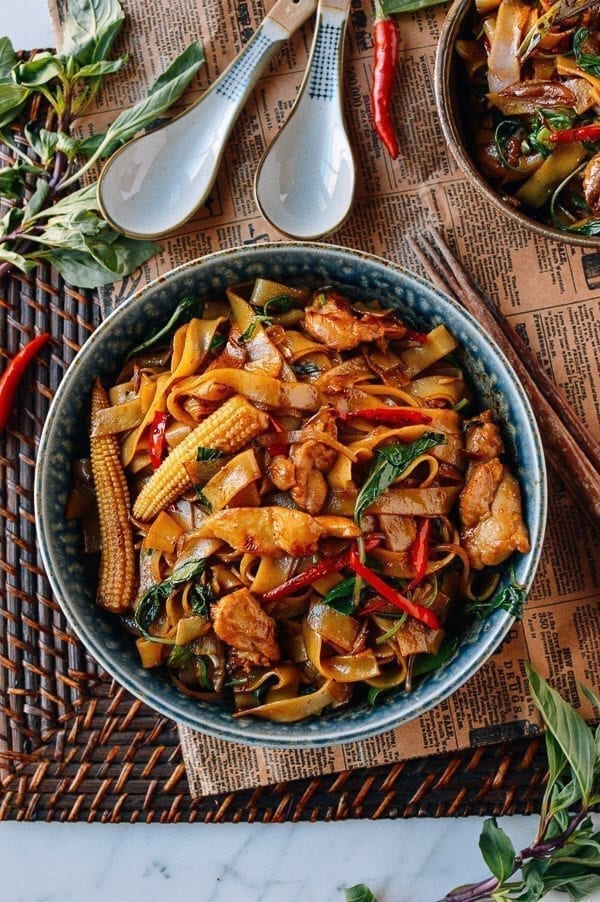
13. Pad Kee Mao (Drunken Noodles)
Pad Kee Mao is a spicy Thai stir-fry dish made with wide rice noodles. You’ll love its bold flavors and satisfying texture.
To make it, start by cooking rice noodles according to package directions. Heat oil in a wok and stir-fry garlic, chili peppers, and chicken until nearly done.
Add onions, basil, and vegetables like baby corn or tomatoes. Pour in a sauce made from soy sauce, fish sauce, and oyster sauce. Toss in the cooked noodles and stir-fry until everything is well combined and the noodles are slightly charred.
Finish by adding fresh basil leaves and a splash of vinegar. Serve your Pad Kee Mao hot and enjoy the spicy, savory flavors.
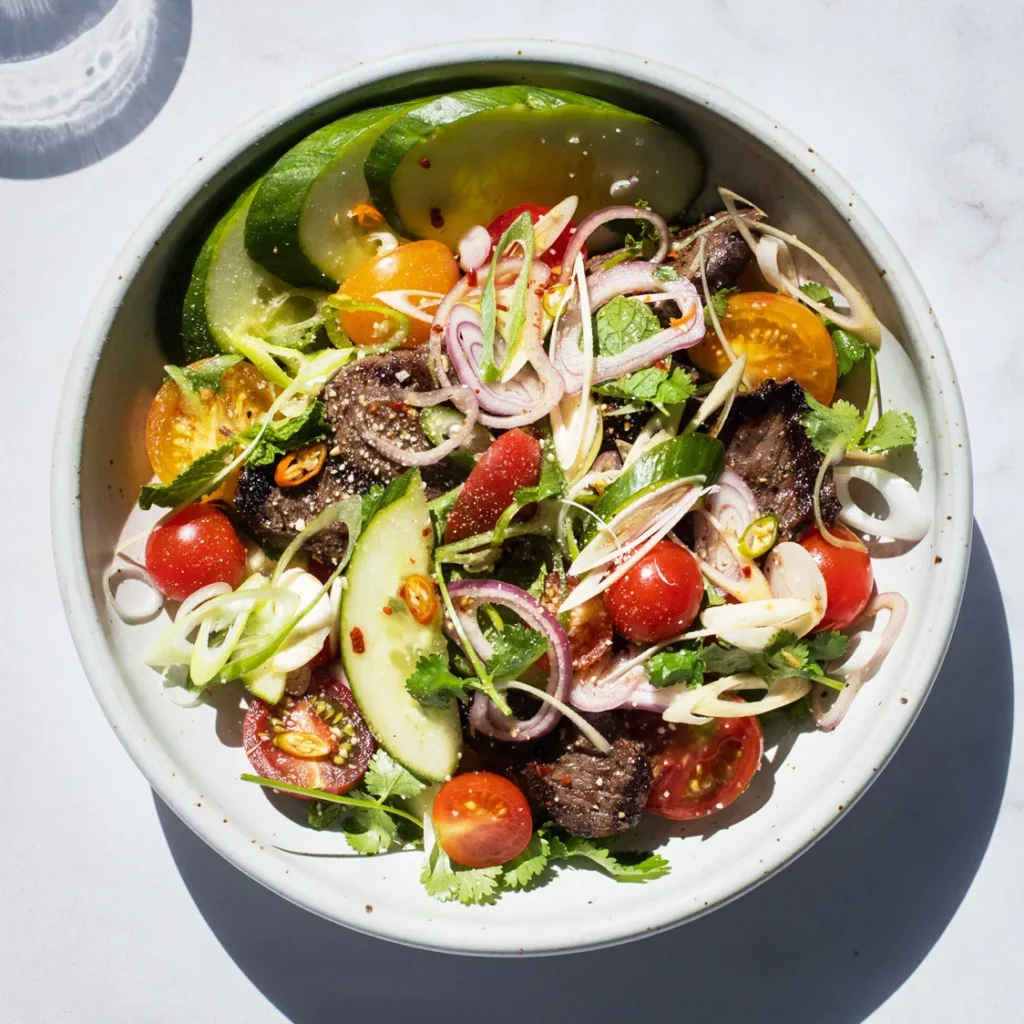
14. Yum Nua (Beef Salad)
Yum Nua is a tasty Thai beef salad that’s easy to make at home. You’ll grill or pan-sear thin slices of steak until they’re cooked to your liking.
Mix the beef with fresh veggies like cucumbers, tomatoes, and shallots. Add herbs such as mint and cilantro for extra flavor.
The dressing is a mix of fish sauce, lime juice, and a bit of sugar. This gives the salad a perfect balance of salty, sour, and sweet tastes.
Toss everything together just before serving. You can enjoy Yum Nua as a light meal or as part of a larger Thai feast.
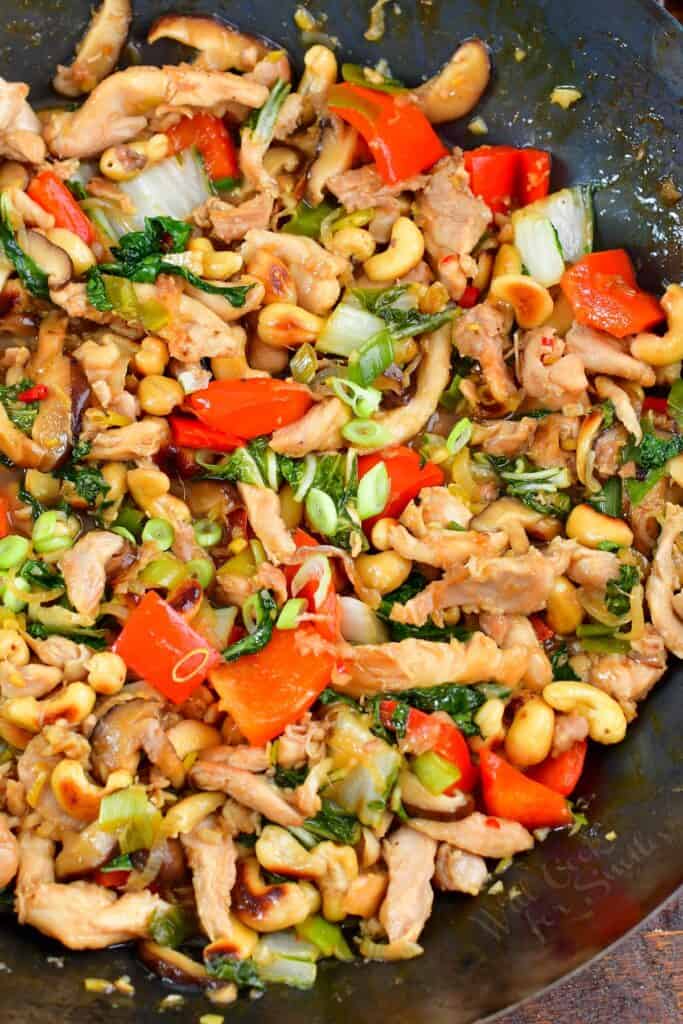
15. Gai Pad Med Mamuang (Chicken with Cashew Nuts)
Gai Pad Med Mamuang is a tasty Thai stir-fry dish. You’ll love this mix of chicken, cashews, and veggies in a flavorful sauce.
To make it, you’ll need chicken breast, cashews, garlic, onions, and bell peppers. The sauce combines oyster sauce, soy sauce, and fish sauce for a rich taste.
This meal is quick to cook, taking about 25 minutes from start to finish. It’s perfect for busy weeknights when you want something yummy and fast.
Serve your Gai Pad Med Mamuang with steamed rice for a full meal. The mix of tender chicken, crunchy nuts, and savory sauce will make your taste buds happy.
Understanding Thai Cuisine
Thai food is known for its bold flavors and aromatic ingredients. It combines sweet, sour, salty, and spicy tastes to create unique and delicious dishes.
The Role of Fresh Ingredients
Fresh ingredients are key in Thai cooking. You’ll find lots of herbs and spices like lemongrass, kaffir lime leaves, and Thai basil. These add bright flavors and scents to the food.
Vegetables play a big part too. Common ones are bamboo shoots, eggplant, and green papaya. They bring crunch and color to many dishes.
Protein sources vary widely. Seafood is popular in coastal areas. Chicken and pork are used often too. Tofu is a great option for vegetarian meals.
Balancing Flavors: Sweet, Sour, Salty, and Spicy
Thai cooks aim to balance four main tastes in their dishes. This mix creates the complex flavors Thai food is famous for.
Sweet comes from palm sugar or fruit. Sour notes come from lime juice or tamarind. Fish sauce adds saltiness. Chili peppers bring the heat.
You can adjust these flavors to your liking. Many Thai restaurants let you choose how spicy you want your food. At home, you can tweak recipes to suit your taste.
Some popular dishes that show this balance are:
- Pad Thai: Sweet, sour, and slightly salty
- Tom Yum soup: Sour and spicy
- Green curry: Sweet, salty, and spicy
Try making these at home to practice balancing flavors yourself!
Essential Ingredients in Thai Cooking
Thai cuisine relies on a mix of unique flavors and textures. Key ingredients bring authenticity to dishes and create the perfect balance of sweet, sour, salty, and spicy.
Key Herbs and Spices
Thai basil adds a licorice-like taste to many dishes. Its purple stems and small leaves set it apart from regular basil. Lemongrass gives a citrusy flavor to soups and curries. You’ll often find it in Thai curry pastes too.
Galangal looks like ginger but has a sharper, piney taste. It’s a must-have for tom kha gai soup. Kaffir lime leaves bring a bright, citrusy aroma to curries and soups. You can use them fresh or dried.
Chili peppers are crucial for heat. Thai bird’s eye chilies pack a punch in many recipes. Turmeric adds color and earthy flavor to curries and rice dishes.
Staples: Rice, Noodles, and Coconut Milk
Jasmine rice is the go-to for most Thai meals. Its fragrant aroma pairs well with curries and stir-fries. Rice noodles come in various sizes and are used in popular dishes like pad thai.
Coconut milk is a key ingredient in many Thai curries and desserts. It adds richness and balances out spicy flavors. You can find it canned in most grocery stores.
Fish sauce gives Thai food its signature umami flavor. Use it sparingly as it’s very salty. Palm sugar adds sweetness to balance out sour and spicy tastes. It comes in solid blocks or paste form.
Mastering Thai Cooking Techniques
Thai cooking uses special methods to create its bold flavors. Learning these techniques will help you make tasty Thai dishes at home.
Stir-Frying and Wok Cooking
Stir-frying is key in Thai cooking. Use a wok or large skillet over high heat. Heat oil until it’s very hot. Add aromatics like garlic and chili first. Cook them quickly, then add meat or tofu. Stir often to prevent burning. Add veggies last so they stay crisp.
Keep ingredients moving in the pan. This cooks food fast and keeps it from sticking. Have all items cut and ready before you start cooking. Stir-frying goes fast!
Use a wooden spoon or metal spatula to toss food. Push food up the sides of the wok to cook evenly. Add sauces at the end and toss to coat.
Making Curry Pastes from Scratch
Curry paste is the base of many Thai dishes. To make it, you’ll need a mortar and pestle or food processor. Start with dry spices like coriander and cumin seeds. Toast them in a dry pan to bring out flavors.
Grind the toasted spices. Add fresh ingredients like lemongrass, ginger, and chilies. Pound or blend until smooth. Mix in wet items like shrimp paste last.
Making paste takes time but gives great flavor. It’s fresher than store-bought. You can adjust spices to your taste. Store extra paste in the fridge or freeze it for later use.